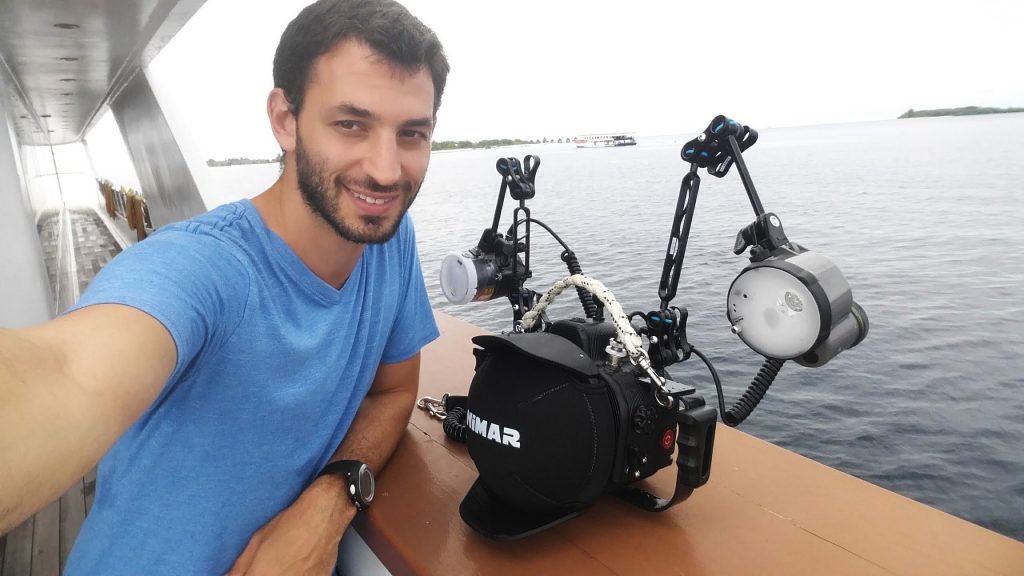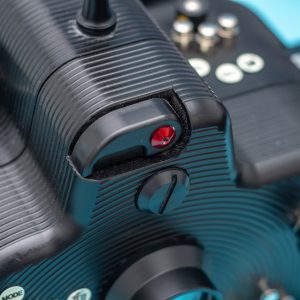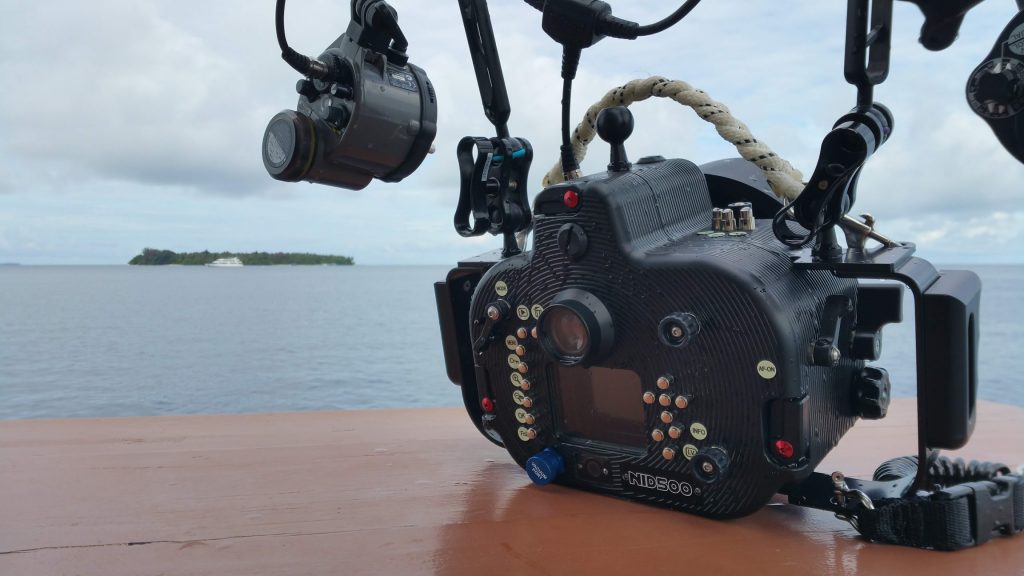NiMAR Pro DSLR Housing – Complete Review
The new NiMAR PRO series features a high-end design and completely new port line-up for select Canon and Nikon DSLR cameras. In the past couple of months I got my hands on one of the first NiMAR PRO underwater housings out of production and tested it out with my Nikon D500!
Introduction
NiMAR have been making excellent and affordable underwater housings for cameras since 1984 (hey, that’s the year I was born!). In 2018 they introduced a brand new line-up of PRO housings, offering a high-end underwater housing for pro DSLR’s, without breaking the bank.
These new housings are made out of Delrin, an exceptionally strong material that bridges the gap between polycarbonate and aluminum. They support most if not all of the camera’s controls, include top of the line features such as an optional vacuum system, port lock mechanism, easy locking latches, plenty of mounts, interchangeable bayonet ring mount to support various port brands and more.
Design
NiMAR Pro housings are all black, with a rugged 3D-printed body and removable grips. All controls are clearly labeled and glow in the dark, which is very useful on night dives. The grips are includes with the housing, but can be removed for travel / storage. Important controls are right at your fingertips when your hands are on the grips, including the shutter lever, aperture dial, zoom gear and several other controls, depending on the model.
Three ball mounts are included as standard accessories, one on each grip, and a top mount for installing a GoPro, focus light or any other accessory.
The back side locks with 3 easy to operate latches, which are activated with a push and twist mechanism and keep your housing sealed and secure. It’s virtually impossible to unlock them by accident. As an idiot, I always appreciate idiot-proof designs 😉
The port lock mechanism is an easy 1/4 twist bayonet, with a port lock lever which prevents accidental twisting of the port. Make sure you pull the lever when installing the port and twisting it in place, so you don’t bend the lock by accident.
The same port lock lever is also used to release the lens, so you can easily release the lens and change lenses / ports without opening the back side of the housing.
A Nikonos 5-pin type bulkhead is built-in, and two more bulkhead holes are available for any type of accessory, such as an HDMI bulkhead.
The model I tested was an earlier prototype, so it had a sync cord option only, but the new housings also include dual fiber optic connectors on the top of the housing, which can either be used by the built-in flash, or with an add-on LED optical trigger.
Ports and Mount Type
A unique feature of the NiMAR Pro housings, is that the bayonet ring on the housing can be customized to fit your needs. The default mount is a N120 Nauticam type, but NiMAR Pro housings can support almost any port brand in the market, including Aquatica, Ikelite, Sea & Sea, Seacam, Subal, NiMAR NIM-108 ring mount. How cool is that? You can use any of your older ports from previous brands and save a lot of $$ when upgrading your rig.
NiMAR have produced a brand new line of ports, compatible with the Nauticam N120 mount, which fit on the NiMAR Pro housing, including a 6″ dome port, 4″ mini port and 8″ large dome port, both in acrylic and glass. An extensive port chart supports pretty much every lens you might be using.
Vacuum System
Every housing is equipped with a vacuum port, a blue cap on the bottom back side. The manual vacuum check is simple – remove the blue cap, screw in the gauge (sold separate) and pump the air out of the housing with the hand pump. Wait for 30 minutes and verify that the vacuum is maintained. If so – your housing is sealed! Release the vacuum with the valve hidden under the red cap on the left side of the housing, replace both caps and off you go.
Electronic vacuum system – The new VT models include an electronic vacuum valve, which has an indication for the vacuum status using an LED. Also, the release button is located in the valve itself, right under the cap. Check out the video below to see how it works:
Usability
Immediately when picking it up, the housing feels very sturdy. Almost like aluminum housings. It is rather large and slightly heavier than other housings in the market, but it’s negligible when you factor in the camera, lens, port, arms, strobes and all the rest of the accessories that make our rigs look like spacecrafts.
Two grips are included as standard accessories, along with a ball mount on each grip and a ball mount on the top. The grip brackets have plenty of holes for a top lanyard and also for a security lanyard for your BCD (which I hope you are using!).
The bottom tray features 2 holes for tripods – a standard one and larger one.
The grips feel quite natural and the shutter trigger is right there at the tip of your index finger. Other accessible controls include the aperture dial, the AF-ON (very easy to back-focus with this!), the zoom control and the AF on the left side. If you have a pretty large hand, you may be able to reach the rear dial as well with your thumb.
Other controls are accessible by taking one hand off the grip. The top controls for ISO, Record and Exposure compensation are a bit hard to reach, especially if you want to change the exposure compensation or ISO which would require using both hands off the grip and a bit awkward.
The viewfinder has excellent coverage and it’s very easy to use it underwater with your mask on.
Photos Taken with the D500 in the Nimar Pro Housing
Macro shots taken in the Red Sea (Eilat, Israel) using the Nikon 105mm and flat port. Wide angle shots taken in the Maldives using the Tokina 10-17mm fisheye lens under the 8″ acrylic dome port.
Conclusion
The NiMAR Pro housing is an excellent piece of engineering. A high-end delrin housing which puts up a fight to aluminum housings and includes all the great features you would expect from a high end housing.
The versatility of the NiMAR Pro gives it a unique edge – being able to support various brands of ports, connectors for both sync cord and fiber optic cables, multiple bulkhead holes and extensive lens support.
Overall I was very happy with this housing and strongly recommend it as an excellent and affordable solution to take your DSLR or mirrorless underwater.
- Native Lenses vs. Wet Lenses for Underwater Photography – December 20, 2023
- The Complete Guide to Practicing at Home for Underwater Photographers – October 4, 2023
- Best Strobe for Underwater – The Ultimate Strobe Guide (Updated!) – June 29, 2023

 USD
USD

















